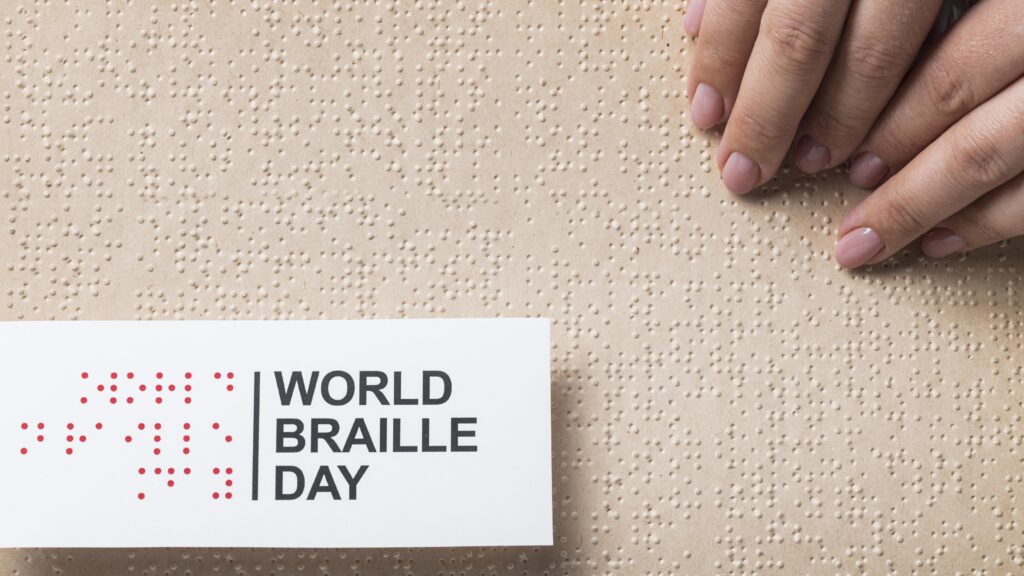World Braille Day celebrated since 2019, is observed to raise awareness of the importance of Braille as a means of communication in fully realizing the human rights of blind and partially sighted people.
Braille is not a language but a tactile representation of alphabetic and numerical symbols using six dots to represent each letter and number, and even musical, mathematical and scientific symbols. There are braille codes for the vast majority of languages. Depending on the language, some symbols have different meanings for aspects such as accented letters.
Braille (named after its inventor in 19th century France, Louis Braille) is used by blind and visually impaired people to read the same books and periodicals as those printed in a visual font through touch.
How Braille Works

The cells are composed of the dot (or bump) itself and the space between the dot and its neighbors. You gently pass the pads of your fingers over the Braille and recognize the signs.
There are two types of Braille: contracted and uncontracted. Uncontracted Braille allows for small letter contractions that make Braille much shorter and faster to read. For example, a phrase that takes six cells to write in contracted Braille would take 12 cells in uncontracted Braille. Still, uncontracted Brille can be useful for labelling items in the house or learning alongside children.
Electronic braille notetakers and refreshable braille displays now allow blind and visually impaired people who know Braille to browse the internet, read webpages and email, and save and edit their written work.
You can read books, newspapers, magazines, and other written materials completely differently if you use Braille. It provides independence to the blind and visually impaired that they would not have otherwise. They can read and write independently with braille devices, allowing them to go shopping, cook meals, study, and even drive!
Reference:
Braille facts. (n.d.). Sight Scotland. https://sightscotland.org.uk/articles/information-and-advice/braille-facts
Mather, K. (2022, October 19). Braille Technology – What It Means to the visually impaired. InFocus Charity, Exeter. https://infocus-charity.org.uk/news-and-stories/blog/braille-technology-what-it-means-to-people-with-visual-impairment/
United Nations. (n.d.). World Braille Day. https://www.un.org/en/observances/braille-day


